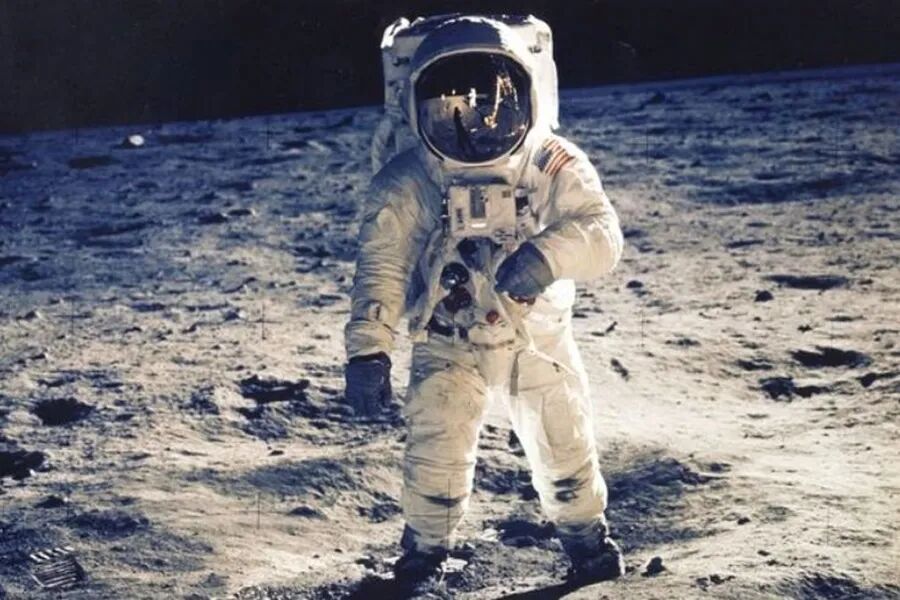NASA has announced plans to send astronauts on a trip around the Moon - with the rocket built to get them there "pretty much stacked and ready to go."
NASA宣布计划派遣宇航员进行绕月旅行——搭载他们前往月球的火箭“基本已组装完毕,蓄势待发”。

It would be the first time in 50 years that any country has flown a crewed lunar mission and could serve as a stepping stone for humanity's first ever journey to Mars. Announcing their plans, the US space agency said on X: "Experts are discussing the latest on the Artemis II mission. Artemis II, which will send four astronauts around the Moon next year, will prepare us for crewed missions to the lunar surface and future Martian missions."
这将是50年来首个载人月球任务,可能成为人类首次火星之旅的垫脚石。 美国国家航空航天局在X平台上宣布计划时表示:“专家们正在讨论阿尔忒弥斯2号任务的最新进展。 阿尔忒弥斯2号将于明年搭载四名宇航员绕月飞行, 这将为我们开展载人登月任务和未来的火星任务做好准备。”
NASA had previously aimed for a launch by the end of April, but now hopes to bring the mission forward to February - with hopes for them to land there as early as 2027.
美国国家航空航天局此前计划在4月底前发射, 但现在希望将任务提前至2月——并希望宇航员最早能在2027年登月。
The ten-day journey will see astronauts test the spaceship and systems they'll need for future Moon landings. It will be the second launch of the Artemis programme, which aims to not only land astronauts, but eventually establish a long-term human presence on the Moon.
这次为期十天的旅程中,宇航员将测试未来登月所需的飞船和系统。 这将是阿尔忒弥斯计划的第二次发射,该计划旨在不仅实现宇航员登月, 还最终在月球建立长期人类据点。
Lakiesha Hawkins, one of Nasa's acting deputy associate administrators, described the mission as being key in the human exploration of space. "We together have a front row seat to history," she said during a news conference on Tuesday afternoon.
美国国家航空航天局代理副副局长拉基莎·霍金斯称此次任务是人类太空探索的关键。 她在周二下午的新闻发布会上表示:“我们将共同见证历史。”
"The launch window could open as early as the fifth of February, but we want to emphasize that safety is our top priority."
“发射窗口最早可能在2月5日开启,但我们要强调的是,安全是我们的首要任务。”
Artemis Launch Director Charlie Blackwell-Thompson said the rocket built to carry astronauts, the Space Launch System (SLS), is "pretty much stacked and ready to go." The final steps are completing the crew capsule, Orion, connecting it to the SLS, and finishing ground tests.
阿尔忒弥斯发射主任查理·布莱克韦尔-汤普森表示,搭载宇航员的火箭——太空发射系统(SLS) “基本已组装完毕,蓄势待发”。最后步骤是完成载人舱“猎户座”的组装,将其与太空发射系统连接, 并完成地面测试。
The first Artemis mission in November 2022 lasted 25 days and sent an uncrewed spacecraft around the Moon before safely re-entering Earth's atmosphere. While largely successful, it revealed heatshield issues during re-entry, which have since been resolved.
2022年11月,阿尔忒弥斯1号任务持续了25天,将无人飞船送入绕月轨道后安全重返地球大气层。 尽管任务基本成功,但重返大气层过程中发现了隔热罩问题,目前该问题已得到解决。
NASA astronauts Reid Wiseman, Victor Glover, Christina Koch, and Canadian Space Agency's Jeremy Hansen will not land on the Moon, but they will become the first crew to travel beyond low Earth orbit since Apollo 17 in 1972. Lead Artemis II flight director Jeff Radigan said the astronauts will venture at least 5,000 nautical miles (9,200 km) past the Moon - further than anyone has gone before.
美国国家航空航天局宇航员里德·怀斯曼、维克多·格洛弗、克里斯蒂娜·科赫以及加拿大航天局的杰里米·汉森不会登月, 但他们将成为自1972年阿波罗17号任务以来首批前往低地球轨道以外的宇航员。 阿尔忒弥斯2号首席飞行主任杰夫·拉迪根表示,宇航员将至少飞行至距离月球5000海里(9200公里)处——比任何人走过的距离都远。
The crew will live in the Orion capsule atop the Space Launch System (SLS) rocket. After launch, the boosters and rocket stages separate, and Orion unfolds its solar panels for power. The astronauts will check all systems, then practice manoeuvring the spacecraft in "space ballet" drills to get ready for future Moon landings. Finally, Orion will fire its engines to head toward the Moon, taking four days to get there while the crew keeps testing everything.
宇航员将居住在太空发射系统火箭顶部的“猎户座”载人舱中。 发射后,助推器和火箭级分离,“猎户座”展开太阳能电池板供电。 宇航员将检查所有系统,然后进行“太空芭蕾”机动演练,为未来登月做好准备。 最后,“猎户座”将点火发动机前往月球,耗时四天抵达,期间宇航员将继续测试所有设备。
素材来源:iYuba
|
|
 /1
/1 